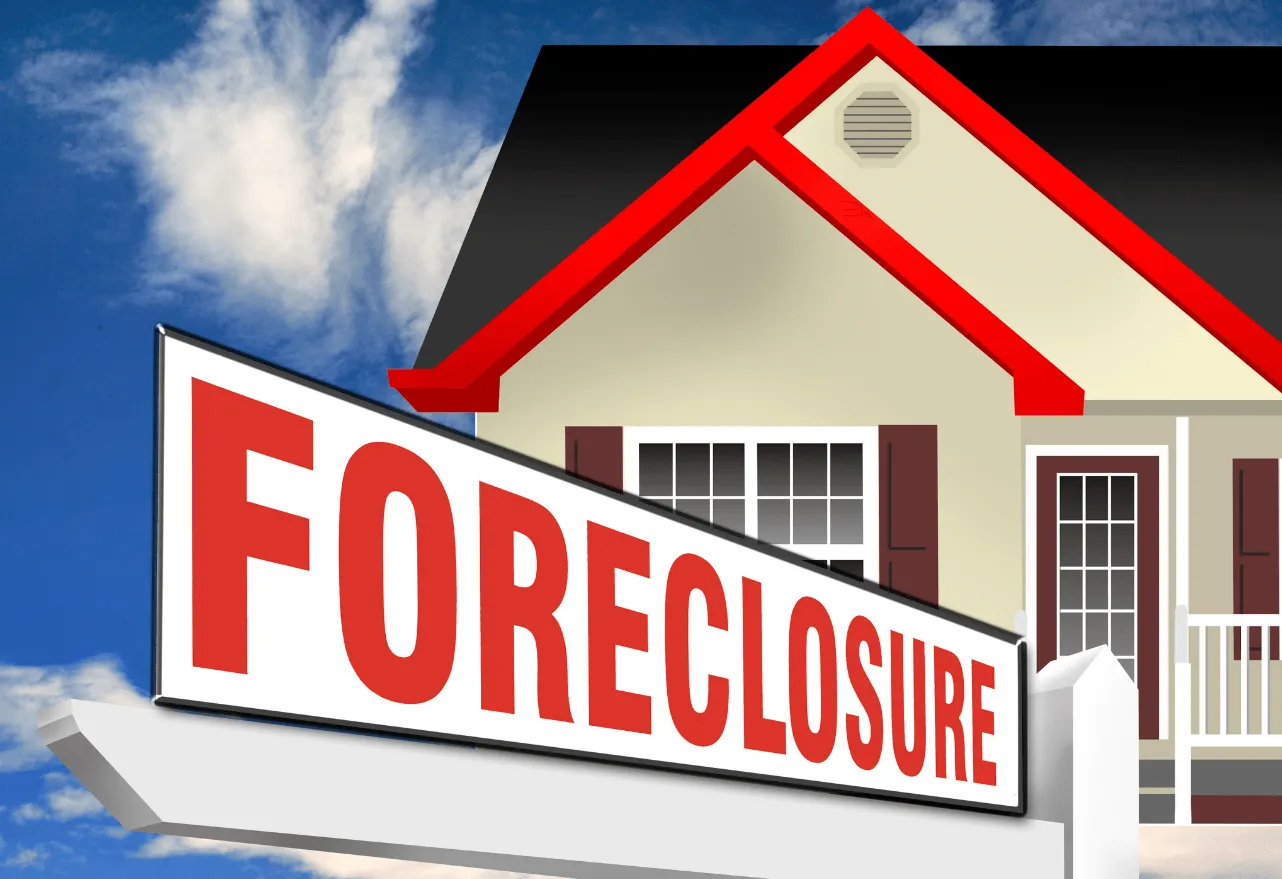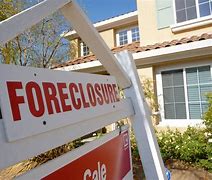If you’re facing foreclosure, you’re not alone.
First, take a deep breath, take your head out of the sand and calm yourself. I know how overwhelming it feels when that foreclosure notice arrives. It can feel like the walls are closing in and you’re out of options—but I promise, you are not powerless. There are real steps you can take right now to stop foreclosure in its tracks and give yourself the time and clarity you need to move forward.
But first let me tell you what most people end up doing right away that I think is a mistake I’ve seen this one the most – that’s with a bankruptcy filing. The owner files a bankruptcy doesn’t matter what chapter and the foreclosure sale stopped immediately. At this point owners can try to get a loan modification or get some sort of loan work out. One thing about this the bankruptcy alone won’t save the house permanently especially if it’s a chapter 7 bankruptcy. To decide which chapter they would need an attorney.
I’ve seen cases where the owner filed bankruptcy to delay the sale and when they didn’t go through with the bankruptcy the other owner and then the tenant filed. This created a long delay.
One important thing to note is that the bankruptcy, unless it is chapter 13 will not stop the sale indefinitely but only causes a delay.
Another way I’ve seen it done is the owner filed a lawsuit against the lender. This is done in non-judicial process where the lender uses an attorney or trustee to foreclose instead of filing petition in court. So, like Florida uses the court (judicial) and Texas uses non-judicial. So, they filed a lawsuit challenging the validity of the foreclosure, accompanied by a motion for a temporary restraining order and preliminary injunction.
The argument is usually something like the lender doesn’t have the right to foreclose….
- Didn’t send a letter of breach if the mortgage or deed of trust requires this step
- Not complying with state or federal foreclosure and mortgage servicing laws
- Failure to comply with FHA or VA guidelines governing loss mitigation procedures (if you have that kind of loan), and
- Lack of standing (the right) to foreclose.
I came across a woman that used this tactic and racked up a lot of legal bills and at the end of the day, she lost the case, and the property went right back into foreclosure with the lender’s legal fees added to the mortgage balance. The Important lesson here to note is that these tactics are just delays.
I’ll walk you through the five most powerful strategies to stop foreclosure immediately, based on what I’ve used in real life to help homeowners avoid losing their homes. These are practical, legal steps that can pause or even completely resolve a foreclosure situation—without resorting to expensive scams, sharks or risky maneuvers.
✅ Step 1: Understand Your Foreclosure Timeline
Knowledge is power—and when it comes to foreclosure, timing is everything.
As soon as you receive a Notice of Default (NOD) or Lis Pendens, the foreclosure process has officially begun. But that doesn’t mean you’re out of time. In many states, you still have weeks or even months before the actual foreclosure sale where they take your house.
➡️ What to do right now:
- Locate and read your foreclosure notice.
- Write down key dates: when the notice was sent, when your deadline is to respond, and if a sale date is scheduled.
- Use this timeline to plan your next moves.
The sooner you understand how much time you actually have, the more strategic you can be in stopping the process.
📞 Step 2: Call Your Lender Immediately
It might feel scary, but one of the most effective things you can do is talk to your lender. They don’t want your home—they want your loan to be performing again.
Lenders often have programs available that can pause or restructure your payments. But here’s the thing: these options are usually only available if you contact them early in the process.
➡️ Ask about:
- Loan Forbearance – Temporarily pausing or reducing payments
- Repayment Plans – Spreading your missed payments over several months
- Reinstatement Options – Paying what you owe in a lump sum
Be honest about your situation. Most lenders are surprisingly willing to help when you’re proactive.
📝 Step 3: Gather Your Financial Documents
This step is crucial if you plan to apply for a loan modification, forbearance, or other relief programs. Lenders need to see proof of your hardship and your ability (or future ability) to repay.
➡️ Documents to collect:
- Recent pay stubs or proof of income
- Last two years of tax returns
- Mortgage statements
- A personal hardship letter explaining your situation
- Bank statements and other assets
Being organized and prompt with these documents shows your lender you’re serious—and increases the chances of approval.
🔄 Step 4: Apply for a Loan Modification or Forbearance
If reinstating your loan isn’t possible (meaning you can’t pay the full amount you’re behind), a loan modification can save your house.
A loan modification restructures your mortgage—this could mean lowering your interest rate, extending the loan term, or even adding missed payments to the end of your loan. Forbearance, on the other hand, gives you a break from making payments temporarily (that’s what happened during COVID19 when banks temporarily suspended receiving payments if you asked them to.
➡️ Pro Tip: Even submitting the application for a loan modification can often pause the foreclosure process while the lender reviews your request.
This is called “loss mitigation” and it’s your legal right as a homeowner.
👩⚖️ Step 5: Get Help from a Professional
You don’t have to navigate this alone. A foreclosure attorney, HUD-approved housing counselor, or real estate professional can provide guidance that’s tailored to your specific situation—and sometimes even intervene with your lender on your behalf.
➡️ Why this matters:
- Laws vary from state to state, and having someone who knows your local process is key.
- Professionals may have access to mediation programs, state-funded assistance, or nonprofit support services you didn’t know existed.
- In some cases, legal action can temporarily stop a foreclosure sale and give you more time to negotiate.
Asking for help is a strength, not a weakness.
The way that you can delay or even stop a foreclosure is by filing a response to a judicial foreclosure, applying for a loan modification, or participating in foreclosure mediation
Apply for Help from Your State’s Homeowner Assistance Fund Program
In early 2021, President Joe Biden signed the American Rescue Plan Act into law. This law created a Homeowner Assistance Fund (HAF), a federal program, to give $10 billion to the states to help households that fell behind on their mortgages and other housing-related expenses due to COVID-19. While applying for help to a Homeowner Assistance Fund program usually won’t stop a foreclosure (unless you have a Fannie Mae or Freddie Mac loan), you might still have time to get assistance. Most HAF programs are scheduled to continue until 2025 or 2026 or when all allocated funds have run out. While many HAF programs have used all their funding and stopped taking applications, particularly in states with high foreclosure rates, HAF programs are still open in some states.
💡 Real Story: How One Homeowner Beat Foreclosure
A homeowner I worked with was facing foreclosure due to being months behind on his payments. He was frozen with fear, unsure of what to do. Together, we gathered his documents, contacted his lender and submitted a loan modification request. The lender approved the paperwork and granted the loan modification. That request alone stopped the foreclosure and cancelled it completely.
He was able to keep his home, plus reduced his payments, and ended up saving a lot of money because he did not have to pay past payments. It all started with a phone call and a plan.
🙌 Final Thoughts: Take Control and Save Your Home
If you’re reading this and you’re in the middle of a foreclosure crisis, know this: You are not alone, and you are not out of options.
It’s okay to feel scared—but don’t let that fear keep you from acting. Even if you’ve missed multiple payments or your home is scheduled for sale, there is often a way to pause, reset, and rebuild.
Here’s what I want you to remember:
- Act fast, but don’t panic.
- Reach out for help—your lender, a counselor, or someone like me.
- You are not your situation. This is just a chapter, not your whole story.
✨ Want more help?
If you’re in foreclosure or know someone who is, contact me today or check out my free videos on YouTube. I break down real strategies that real people are using to keep their homes.
📺 Contact me here: How to Stop Foreclosure Immediately on YouTube
👋 Let’s Connect!
💻 Website: aliciacox.com
📧 Email: hello@aliciacox.com
🎥 YouTube: Alicia Cox Media
📝 Get the free guide: “What to Do When You Get a Foreclosure Notice”








